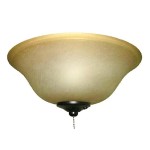Essential Aspects of Vaulted Ceiling Examples
Vaulted ceilings are striking architectural features that add an air of grandeur and spaciousness to any room. Understanding the essential aspects of vaulted ceiling examples is crucial for designing and appreciating these beautiful structures. This article explores the key elements to consider when dealing with vaulted ceilings, providing valuable insights for architects, designers, and homeowners alike.
The term "vaulted ceiling" encompasses a wide range of ceiling types characterized by their curved or arched shape. These ceilings create a sense of height and volume, enhancing the overall aesthetics of a space. Vaulted ceilings can be classified into several types based on their shape, including barrel vaults, groin vaults, and ribbed vaults.
Types and Shapes of Vaulted Ceilings
Barrel vaults: These are the simplest type of vaulted ceilings, featuring a continuous curved shape that resembles a half-cylinder. They are often used in long, narrow spaces such as hallways or corridors.
Groin vaults: These vaults are formed by the intersection of two barrel vaults at right angles, creating a series of cross ribs. Groin vaults are commonly found in medieval architecture and add a sense of depth and complexity to the ceiling.
Ribbed vaults: These vaults feature prominent ribs that divide the ceiling into a series of bays. The ribs can be decorative or structural, providing additional support to the ceiling. Ribbed vaults are often found in large, grand spaces such as cathedrals and palaces.
Design Considerations for Vaulted Ceilings
Height and proportions: The height and proportions of a vaulted ceiling play a crucial role in determining its visual impact. Higher ceilings create a more dramatic effect, while lower ceilings can create a more intimate atmosphere. The proportions of the vault should be carefully considered to ensure that it complements the overall design of the room.
Lighting: Vaulted ceilings can be challenging to light effectively. Natural light is ideal, but artificial lighting can be used to enhance the beauty of the ceiling. Recessed lighting can be used to highlight the curves and details of the vault, while chandeliers or pendants can provide ambient lighting.
Materials and Finishes: Vaulted ceilings can be constructed from various materials, including wood, plaster, and concrete. The choice of material affects the appearance and weight of the ceiling. Plaster ceilings can be painted or decorated with frescoes, while wood ceilings can be stained or left natural. Concrete ceilings can be left exposed or painted.
Decorative elements: Vaulted ceilings provide an excellent canvas for decorative elements. Murals, paintings, or stained glass windows can be incorporated to enhance the visual appeal of the ceiling. Cornices, moldings, and other embellishments can also be used to add character and depth to the design.
Conclusion
Vaulted ceilings are architectural masterpieces that add beauty and grandeur to any space. Understanding the essential aspects of vaulted ceiling examples, including their types, shapes, design considerations, and decorative elements, is essential for creating stunning and harmonious designs. Whether in a historic cathedral or a modern home, vaulted ceilings continue to inspire and amaze, showcasing the enduring power of architectural innovation.

Vaulted Ceilings 101 History Pros Cons And Inspirational Examples

Vaulted Ceiling Design Ceilings Armstrong Residential

Vaulted Ceilings 101 The Pros Cons And Details On Installation Bob Vila

Vaulted Ceilings 101 History Pros Cons And Inspirational Examples

The 8 Diffe Types Of Ceilings 9wood

The Ultimate Guide To Vaulted Ceilings Pros Cons And Inspiration

Ceilings Vaulted Or Cathedral Drummond House Plans Blog

Vaulted Ceilings Vs Cathedral Remodeling Consultants

Vaulted Ceilings 101 History Pros Cons And Inspirational Examples

25 Vaulted Ceiling Ideas With Pros And Cons Digsdigs
Related Posts








